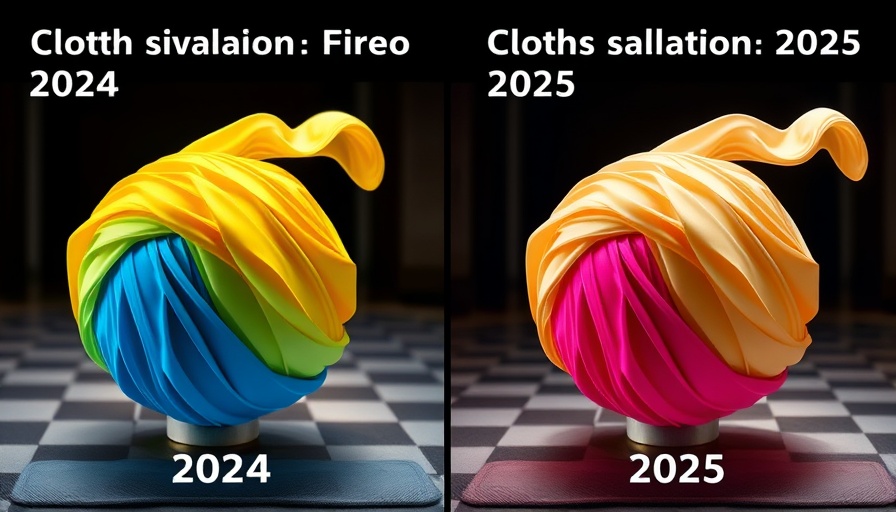
Revolutionizing Computer Simulations: NVIDIA's Recent Breakthrough
In the world of computer graphics, NVIDIA has recently unveiled a remarkable advance that has the potential to change how we experience visual simulations forever. Their new technique, dubbed Offset Geometric Contact (OGC), promises a revolutionary shift in creating realistic simulations that don’t just look real, but behave as if they are. For business owners, tech enthusiasts, and educators alike, this innovation opens doors to yet unexplored possibilities.
In 'NVIDIA Just Solved The Hardest Problem in Physics Simulation!', the video presents an incredible advance in simulation technology, and we’re exploring its key implications and insights.
Understanding Penetration-Free Simulation
At the heart of this breakthrough is the idea of penetration-free simulation. Imagine playing your favorite video game, and rather than your character’s hand phasing through a closed door, it actually stops, replicating real-world physics. This immersive experience is what every gamer and developer dreams of achieving. With the introduction of OGC, we edge closer to that dream. The technique allows two million triangles to interact seamlessly, making simulations not only faster but also incredibly realistic.
The Shift from Incremental Potential Contact
Previously, simulations relied on a method known as Incremental Potential Contact (IPC), which proved to be slow and often created visual artifacts. IPC operated like a city-wide traffic control system: it would halt everything if just a single car was at risk of colliding. Understandably, this could lead to frustrating delays in simulations. OGC, on the other hand, resembles smart traffic lights that only respond when there’s an actual danger, allowing other vehicles—or in this case, objects—to keep moving freely. This efficiency translates to a simulation that is over 300 times faster, which is astounding.
Enhancing the User Experience with Local Forces
But how does OGC achieve this breathtaking speed? The answer lies in local force fields that interact with adjacent objects only when necessary. This design decision allows designers and developers to create richer, more engaging environments. In practical terms, if you were to pull on a piece of yarn in a simulation built with OGC, the entire effort wouldn’t ruin the fabric as it might have previously. Instead, elements would remain intact, preserving both integrity and realism.
Potential for Real-World Applications
This breakthrough isn’t just an impressive feat in tech; the implications for various industries are vast. For business owners, the potential to create realistic product simulations can enhance marketing strategies and customer engagement. Students in tech fields can benefit from hands-on experiences with cutting-edge technology, further bridging the gap between theory and application. Additionally, educators can use the visual power of these simulations to create interactive learning environments that capture student interest more effectively.
Looking Ahead: What’s Next?
While the progress is commendable, it’s crucial to acknowledge such advancements are a stepping stone. Dr. Károly Zsolnai-Fehér notes that future research will continue to improve on these techniques, hinting at even more innovations down the road. It’s worthwhile to stay informed and engaged with these developments. What could the next papers disclose? How might this technology evolve to cover its current limitations like rubbery clothing simulations? The excitement lies in the potential and journey ahead.
In conclusion, NVIDIA's achievement in physics simulations hints at a future where realism in computer graphics becomes standard. For those innovative thinkers among us—be you students, business owners, or educators—be sure to explore the implications of this technology. Engage with your peers about the profound effects these advancements may have on our everyday lives. Embrace the future of technology!
 Add Row
Add Row  Add
Add 




Write A Comment